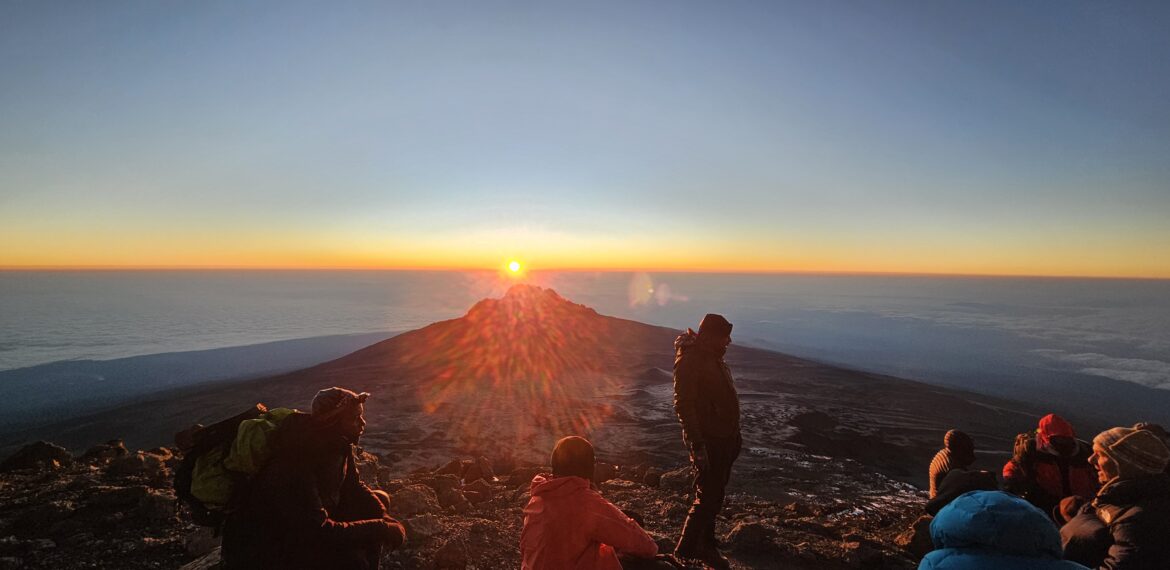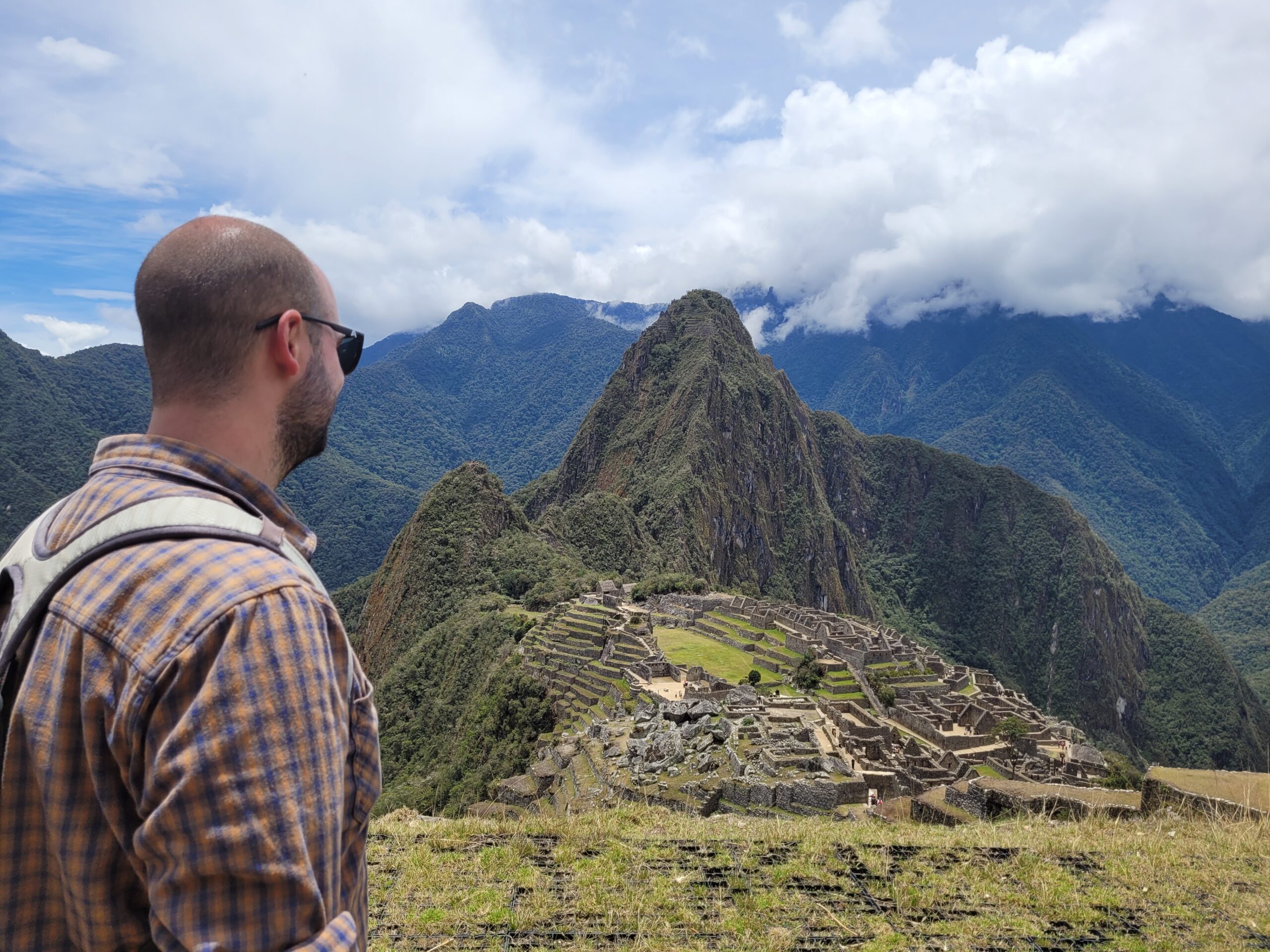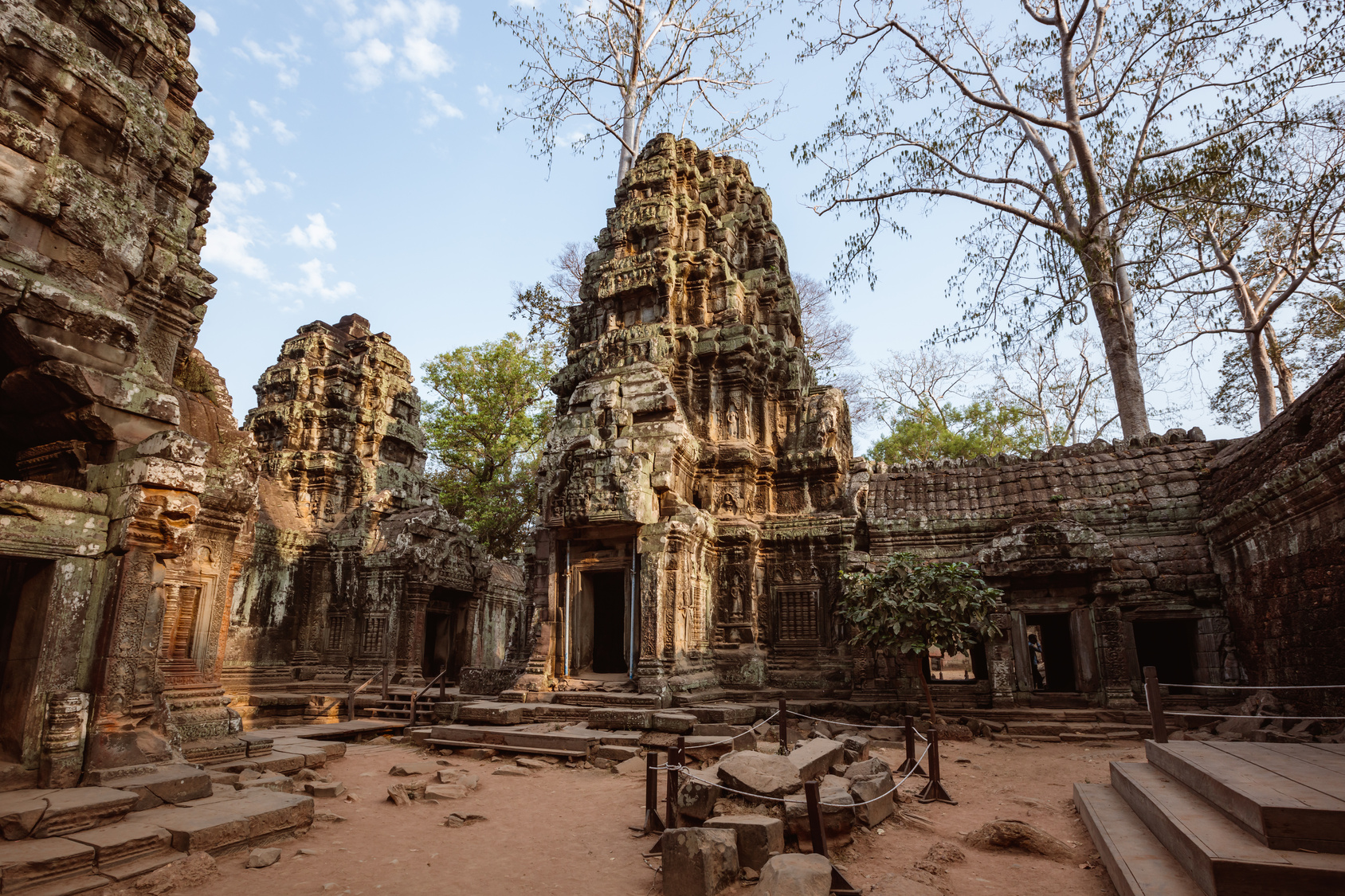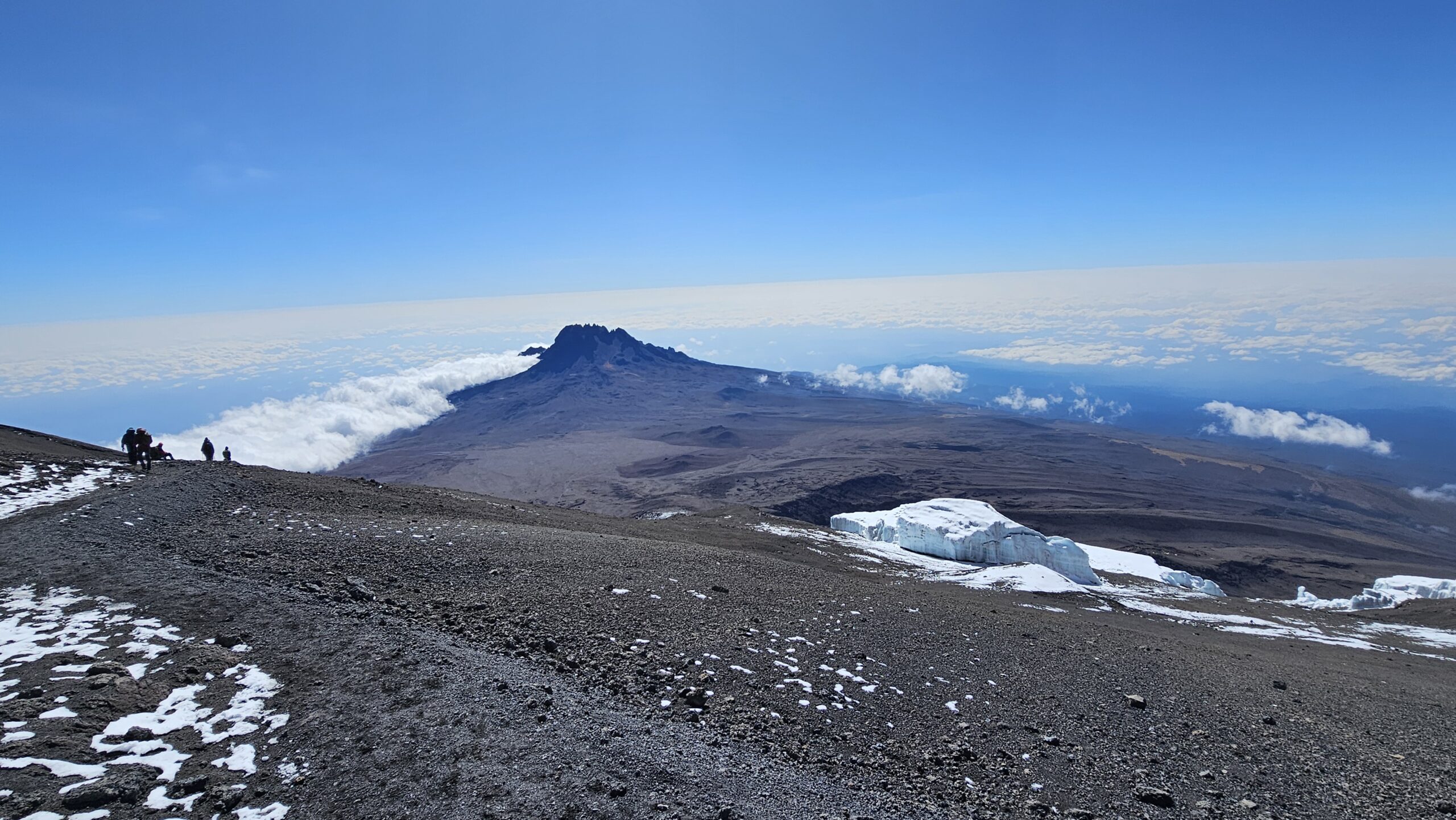I had never really dreamed of climbing Kilimanjaro. It just happened to cross my path. Hans, the owner of Live To Travel, announced the climb via a Facebook post, and it simply sounded too cool to pass up. “Why not?” I thought, and I signed up immediately. I asked my husband if he wanted to join me—having a partner in the group is always more fun than going alone—and he instantly and wholeheartedly said, “Yep, let’s do this.” It was a completely spontaneous decision, without years of preparation or dreaming about reaching the top.
Live To Travel recommended the Rongai Route, one of the seven trekking routes to the summit of Kilimanjaro. Looking back, I’m extremely happy with this choice. It’s the least touristy route, approaching the mountain from the Kenyan side. It has the least rainfall, offers breathtaking views, fewer hikers, and manageable stages. You can complete the route in six or seven days. We opted for seven days, which meant an extra day for acclimatization, increasing our chances of successfully reaching the summit.
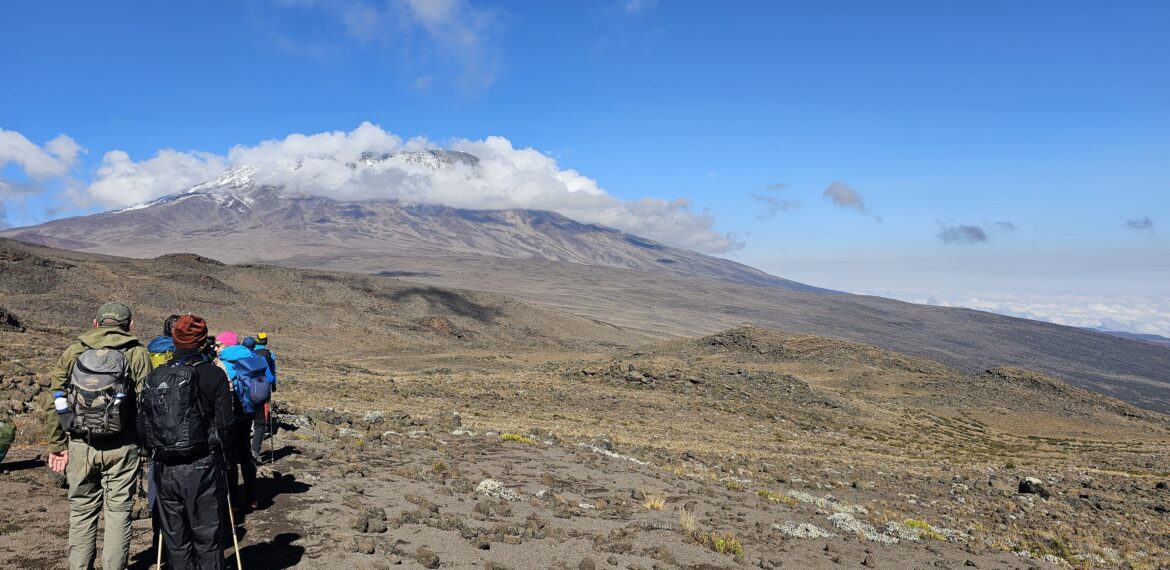
At first, believe it or not, the climb felt like an enjoyable trek. I occasionally had a slight headache from altitude sickness, but otherwise, I was physically in good shape to continue. That surprised me, as I hadn’t expected it to go so smoothly. My husband, on the other hand, had a completely different experience; from day three, he suffered significantly from altitude sickness. While I hardly struggled, the toughest moment arrived: the final ascent to the summit. We set off at night, and after six hours of intense climbing, I suddenly felt completely drained. It was as if my energy was entirely depleted, the lights went out, and I couldn’t go on. That’s when my husband, who had recovered by then, motivated me to keep pushing forward. It was a complete role reversal, but his encouragement gave me the strength to keep going, which ultimately led to that overwhelming moment at Uhuru Peak, the highest point at 5,895 meters.
I felt both physically and emotionally overwhelmed. The views were breathtaking—or at least, that’s what I saw later in the photos, because at the time, I barely remembered my surroundings during the climb and the summit moment. What stood out most was the sense of accomplishment, the support of the group, the guides, and my husband.
The power of the group was magical. Most of our teammates didn’t know each other at all, yet each one of them became dear to me. We helped each other, motivated one another to reach the summit. And as much as you look forward to achieving that ultimate goal, the group atmosphere was just as special: the right words from a fellow hiker, a fun conversation that made you momentarily forget the pain in your legs or the weight of your heavy backpack.
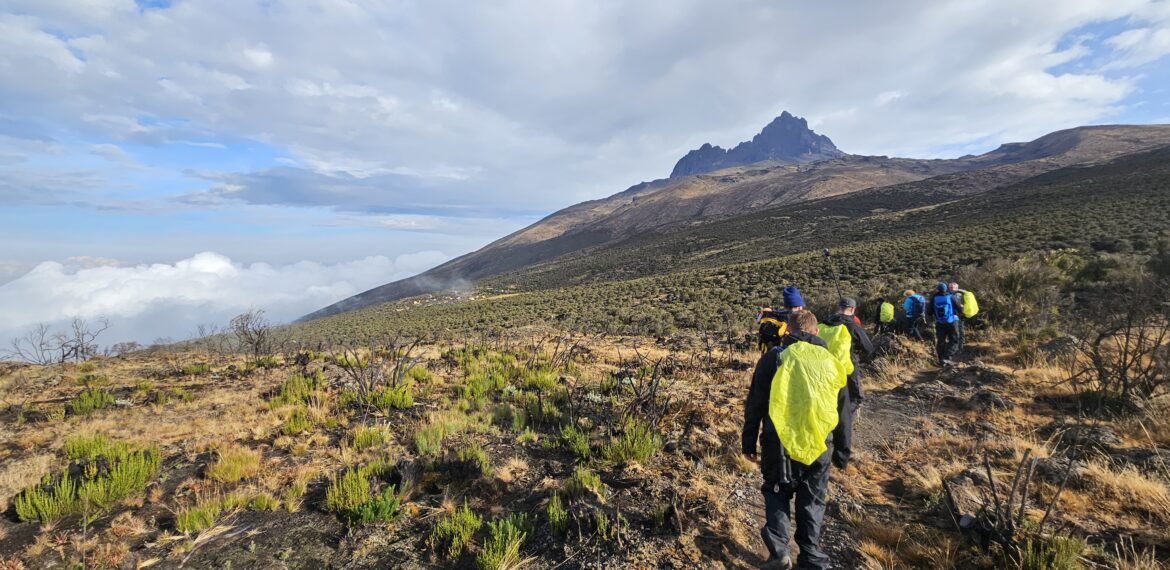
Kilimanjaro taught me not only that I am physically capable of pushing my limits, but also how important mental resilience is. It was a test of perseverance, teamwork, and trusting others. Adventures don’t always have to be meticulously planned. Sometimes, they unexpectedly cross your path, and the key is to seize the opportunity and challenge yourself.
If you ever get the chance to embark on this journey, don’t hesitate for a second. FAME Travel Designers can organize it for you in collaboration with Live To Travel, as local partners are essential for successfully completing such an expedition.
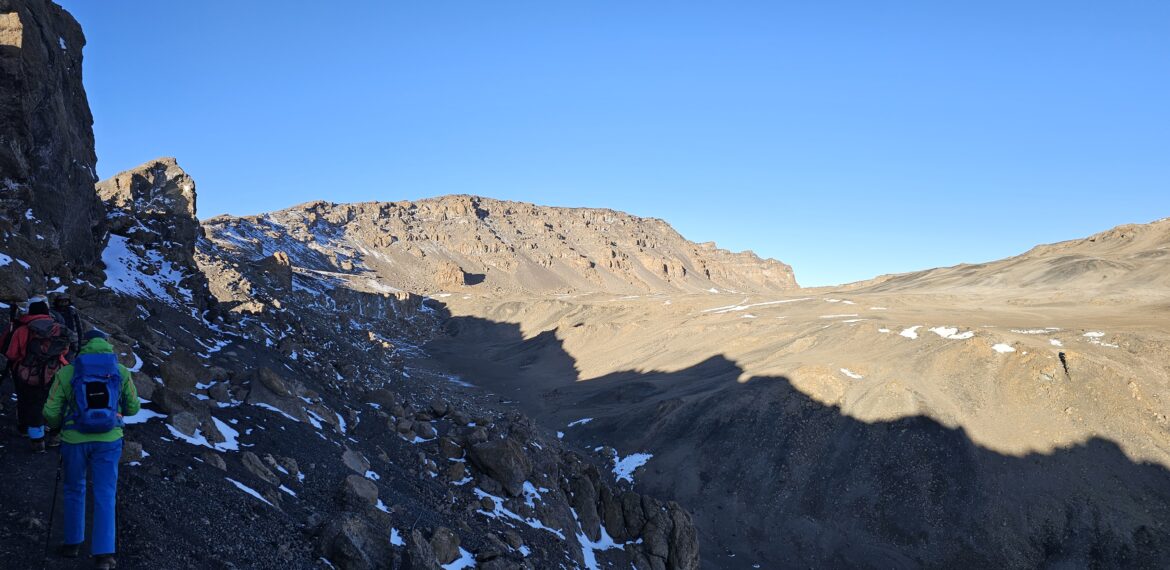
My Tips for Reaching the top:
Dress in layers
The temperature on Kilimanjaro varies greatly—from tropical heat at the base to freezing cold at the summit. Dressing in layers allows you to adapt to the different conditions.
Stay well-hydrated
The air is thinner at high altitudes, and your body expends a lot of energy. It’s crucial to drink enough water, even if you’re not thirsty. This helps prevent altitude sickness and keeps your energy levels up.
Mental preparation is key
The climb is physically demanding, but mental preparation is just as important. There will be tough moments when you think you can’t go on. Staying mentally strong and motivating yourself is crucial. The group dynamic can help tremendously, so maintain a positive and supportive mindset.
Train in advance
While climbing Kilimanjaro isn’t a technical climb, it is physically challenging. Start training a few months in advance: walk long distances, climb stairs or hills, and build endurance.
Trust your guides and porters
The guides and porters are professionals who work on the mountain daily. They know the route and terrain inside out. Trust their expertise, follow their advice, and let them help carry your backpack if needed. They are there to support you.
Enjoy the moment
As you ascend toward the summit, don’t focus solely on reaching the top—embrace the journey itself. Take in the stunning and ever-changing landscapes, cherish the company of your fellow travelers, and appreciate the experience of being in such a unique place.
